











| Common Harvestman (Phalangium opilio (Linnaeus, 1761)) |












|
|
Scientific name: Phalangium opilio (Linnaeus, 1761) Common name: Common Harvestman French name: Faucheur des murailles. Order: Opiliones Family: Phalangiidae Size: Body size: 4 to 7 mm for males, 4.3 to 7.7 mm for females; Legs: about 50 mm. Biotope: Moss and low growing vegetation. Woodlands, cultivated fields, parks and gardens. Web: No web. Observation period: Young Harvestmen will become adults in late summer. Adult Harvestmen may overwinter in warm places. There is a single brood per year in Europe and Harvestmen overwinter as eggs. There may be several broods per year in other parts of the world. Geographic area: Almost any temperate area in the world. |
Harvestmen differ from spiders by their round body with no visible mark between the abdomen and the cephalothorax. They have 8 long legs. The second pair of legs is slightly longer. It is used as a sensory organ to feel the surroundings. The upper side of the Common Harvestman's body shows dark markings (also called saddle) with three enlargements. This saddle tends to disappear at the front. The under side of the body is a creamy white colour. The ocularium is large and shows sharp teeth. The brown orange to black, long and thin legs bear 4 to 6 parallel rows of spines. The most reliable criteria to tell this species apart is the presence of two whitish teeth above the base of the chelicera (that's to say on the front edge of the cephalothorax). The second article of the males' chelicera shows typical pointing forward dagger shaped apophysis. Males have generally a square shaped body. Females' body is more elongated. Common Harvestmen feed on aphids, caterpillars, larvae and small slugs. They can shed one leg to distract predators when threatened. There is a possible confusion with Mitopus morio which also shows one saddle with angulous enlargements. This last one often shows very contrasted colours with a dark saddle on a very light-coloured background. The saddle is well marked at the front. The spines on the legs and on the ocularium are smaller. |
| [To know more about the Common Harvestman] [Next picture] [Top] |
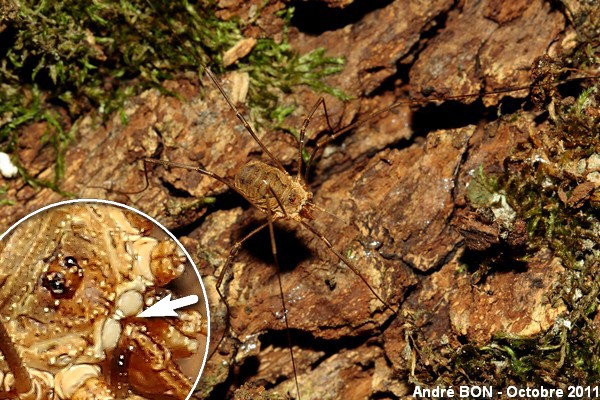
|
I have shot several pictures of this harvestman but it's this upper side view which better shows the shape of the saddle and the two small teeth above the chelicera. |
| [To know more about the Common Harvestman] [Next picture] [Previous picture] [Top] |
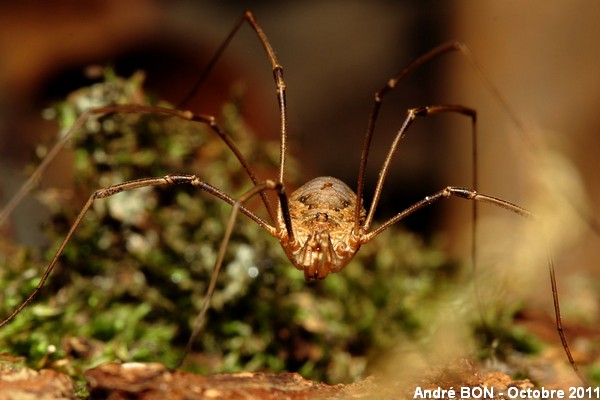
|
I have observed this Common Harvestman in a forest. The rather elongated body shape indicates one female. You cannot see the typical dagger shaped apophysis of males. |
| [To know more about the Common Harvestman] [Next picture] [Previous picture] [Top] |
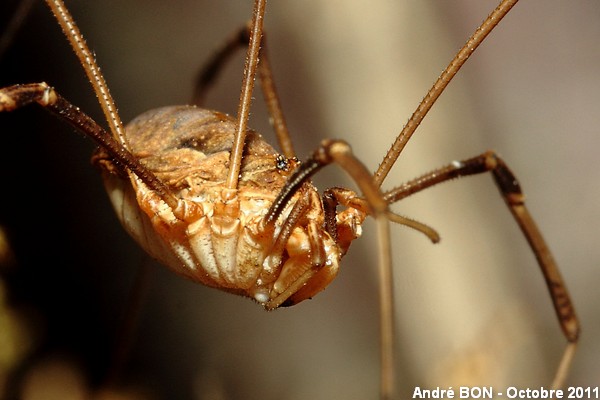
|
On this picture, you can clearly see the spines on the legs and on the ocularium. |
| [To know more about the Common Harvestman] [Next picture] [Previous picture] [Top] |
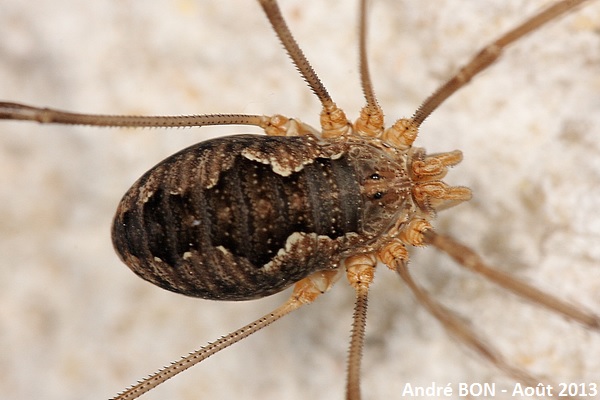
|
No identification problem with this picture which shows the saddle and gives a glimpse on the small white teeth at the front of the cephalothorax. |
| [To know more about the Common Harvestman] [Next picture] [Previous picture] [Top] |
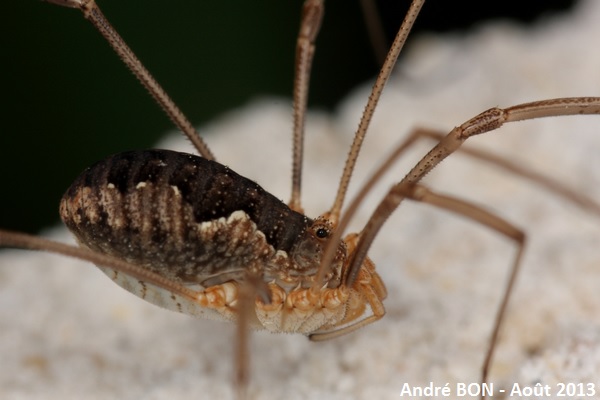
|
I always try to shot a side view of harvestmen with a precise focus on the ocularium. You can clearly see here the sharp teeth bordering it. |
| [To know more about the Common Harvestman] [Next picture] [Previous picture] [Top] |
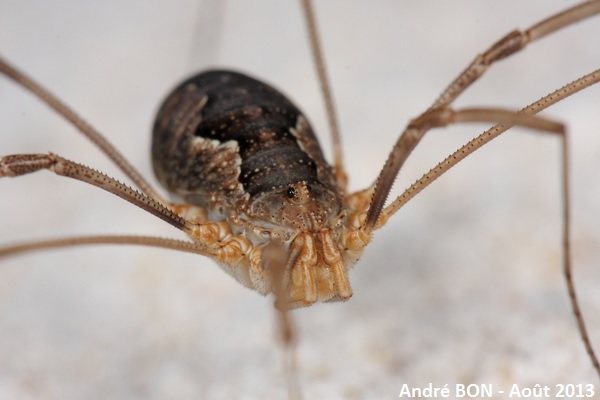
|
The poor mobility of harvestmen and the possibility to use the wall on which they are as a support for the camera really help to shoot pictures. I am using extension tubes to increase the magnification and an external flash to increase the field of depth by setting a small aperture. |
| [To know more about the Common Harvestman] [Next picture] [Previous picture] [Top] |
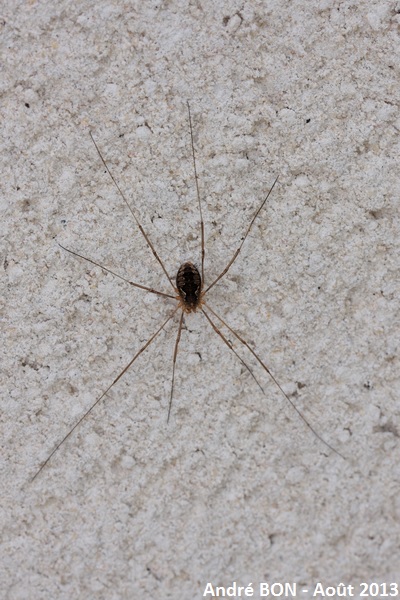
|
Here is one picture shot a little further from the subject. You can clearly see the length of the legs and in particular those of pair II which are longer. |
| [To know more about the Common Harvestman] [Next picture] [Previous picture] [Top] |
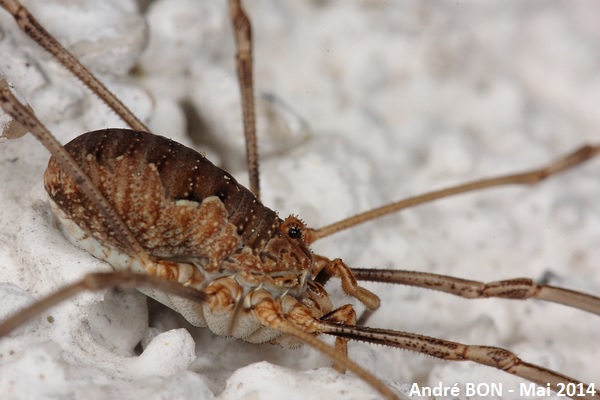
|
The numerous times that I am observing Common Harvestmen on the wall of the house allows me to multiply pictures. Here is one on which you can clearly see the teeth on top of the ocularium with a light coloured background. |
| [To know more about the Common Harvestman] [Next picture] [Previous picture] [Top] |
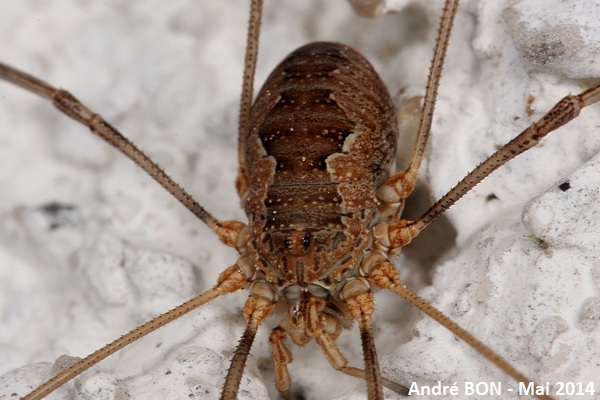
|
And here is a picture of the same harvestman on which you can clearly see the small white teeth which are typical of this species. |
| [To know more about the Common Harvestman] [Next picture] [Previous picture] [Top] |
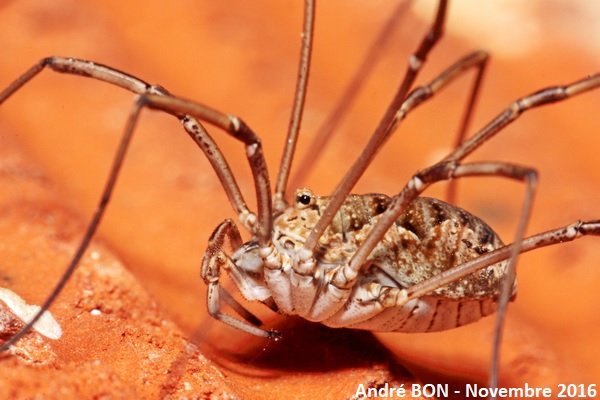
|
And another female, when will I shoot a photo of the male? I did observe one once, but I didn't have my camera with me. |
| [To know more about the Common Harvestman] [Next picture] [Previous picture] [Top] |

|
Front view. |
| [To know more about the Common Harvestman] [Previous picture] [Top] |

|
Here is finally a male. The small white teeth characteristic of the species are clearly visible in this top view. You can also distinguish the large dagger-shaped apophysis pointing forward. |